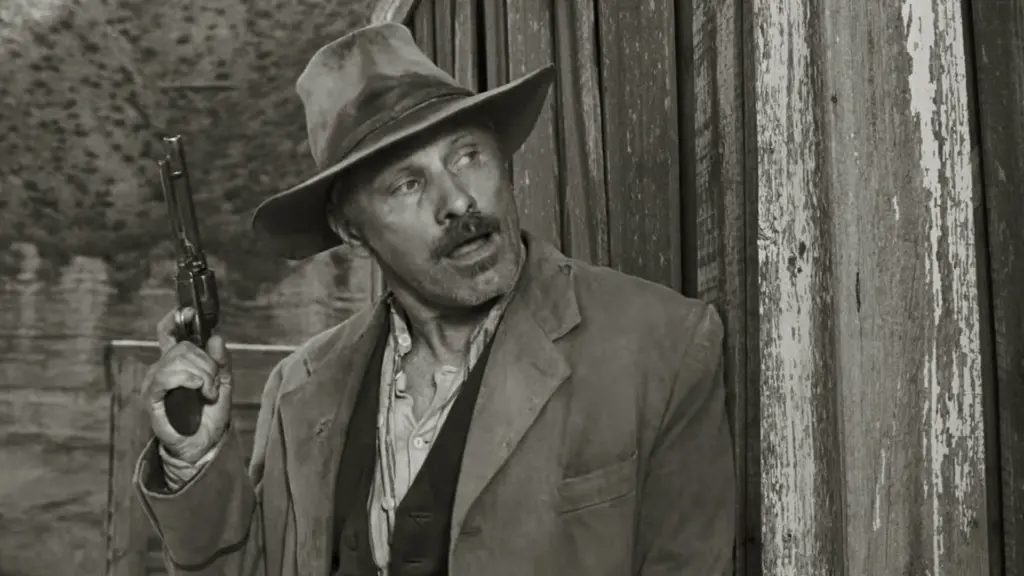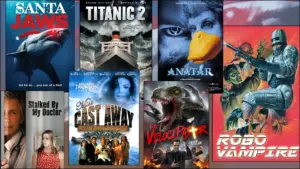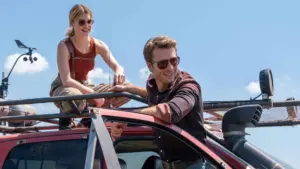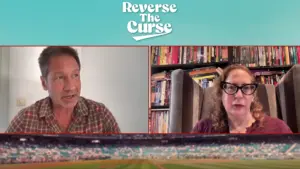Eureka, the newest film from Argentinian writer/director Lisandro Alonso, is an odd bird. Traversing time, space and cinematic form, the 147-minute effort attempts to relate the Indigenous American experience across different eras through a triptych of loosely connected vignettes. While the idea is formally interesting, and the effort admirable, it is hampered by a merciless adherence to slow cinema. The end result is so lethargic that it fails to capitalize on its fertile settings and subject.
The film’s three sections take place years and countries apart, each using a digital reproduction of film stocks and aspect ratios lifted from cinema’s history. The film opens on 1870s Mexico, shown in black and white in 1.37:1, a classic 35mm proportion known as Academy ratio. This section follows Viggo Mortensen as Murphy, a wandering European searching through dangerous border towns for his missing daughter.
Mortensen, as always, is magnetic. He says little and could say less. His presence carries what, alas, is Eureka’s briefest segment by far. It’s regrettable that in a film about the indigenous experience, a segment about a cowboy is its most engaging. Its skeleton of a plot is enough, and Mortensen’s desperation is palpable. The dialogue is hackneyed and overly poetic, but given the circumstance it reads as intentional. The black and white plays wonderfully, and Mortensen’s half-shadowed face looks right at home. This segment apparently is in reference to Alonso’s 2014 film Jauja, also starring Mortensen as a similar character during a similar period. But just as the brooding, desaturated Western finds its stride, it’s time to move on.
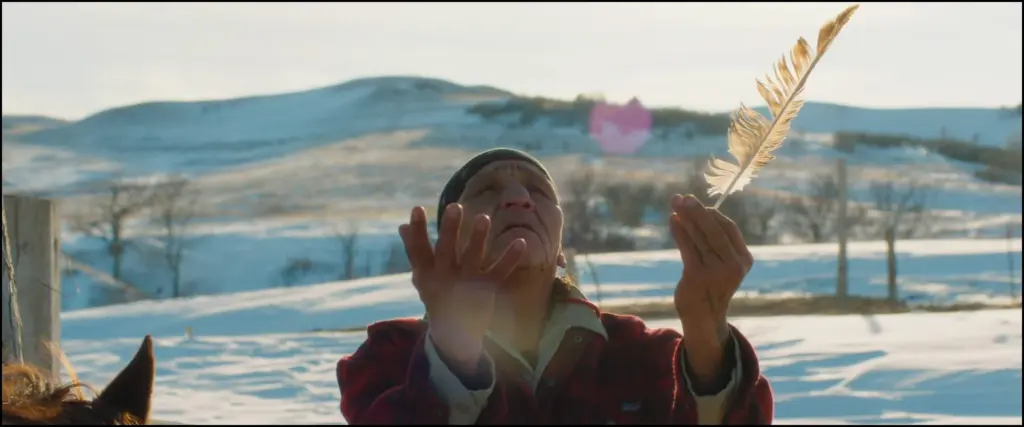
The film transitions next to a Sioux reservation in present day South Dakota, in full color widescreen at the 1.85:1 ratio. This second vignette features newcomer Alaina Clifford as Officer Debonna, a reservation cop on a midwinter night shift. Housesitting for her is additional newcomer Sadie Lapointe as Sadie, a young neighbor.
Though largely plotless, the segment expertly highlights the impoverished, addiction-ravaged Lakota community. Debonna visits dilapidated homes to break up domestic disputes, coasts down snowy highways where isolated drunk drivers weave through the night, checks on a local casino after shots are fired. Sadie helps out at the high school gymnasium and visits her brother in jail. As a portrait it works, and both Clifford and Lapointe add a naturalness that brightens the crawl. Still, after the jarring transition the pace slows to all but a standstill.
Eventually, playing with aspects of indigenous folklore, a giant mythical water bird is introduced to shepherd us to the third and final segment. The colors take on the saturated hues of classic 1970s cinema, the aspect ratio reduces to 1.66:1, and the setting transitions to the jungles of mid-20th century Brazil.
From there it follows Adanilo Reis da Costa as The Disappearing Native, a young tribesman living in the jungle. After a communal dispute he is forced to flee, and finds work panning for gold at a nearby river, where his misfortunes continue.
The pace throughout this segment is similarly glacial, and unlike the middle portion we are given even fewer reasons to care for its characters. Like most of the film, it’s nice to look at it, but even once events kick into gear it remains stubbornly soporific. Not only that, while the recurring bird brings with it a pretense of larger meaning, it is difficult to feel that this final piece brings the whole together in any coherent way, other than through a vague connection in subject.
If anything, Eureka’s jarring transitions in color grade and aspect ratio are its highlight. If the transitions were more frequent and the vignettes briefer, or directly in conversation with one another, or if earlier segments were ever returned to, the result might feel more coherent and engaging. What we’re left with is a competently made but totally aimless affair which feels about an hour longer than its already hefty runtime.
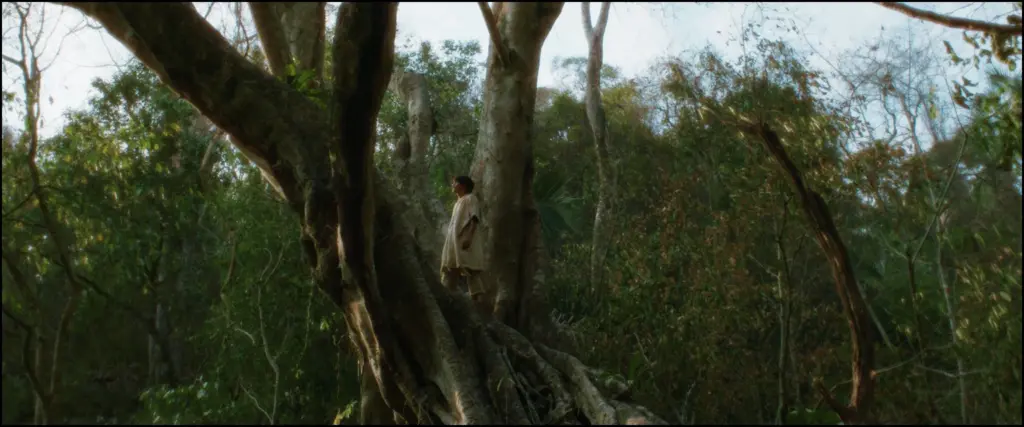
I can’t help but think of 2015’s Embrace of the Serpent by Colombian director Ciro Guerra. That film, which occupied a space more directly in reference to Werner Herzog’s river epics Aguirre, the Wrath of God (1972) and Fitzcarraldo (1982), retold those European narratives from an indigenous perspective. It too was methodical in its pace, played with color and form, and traversed various timelines – but told an absorbing story with compelling characters.
As Eureka drags on, it is difficult not to feel that nearly every shot in the film could be equally effective at half its length. Even if the goal is to portray bureaucratic alienation, or peaceful reverie, after a point the method does disservice to the material. When equal deliberation is granted to both a police waiting area and a grandfather’s living room, neither is allotted the context which a contrast between the two might otherwise imbue. Cinematographers Mauro Herce and Timo Salminen have done a capable job, but nothing here is some Tarkovskian masterwork of framing and atmosphere to warrant the slog; nor are its moments of alienation digital or sterile enough to induce the nausea that is perhaps intended.
In a work of this pace, we are left with ample time to review events and come to our own interpretations; and yet in its few moments where Eureka’s subtlety might be a boon, that touch is absent, robbing the viewer of what interest might be found. A promising concept squandered.

